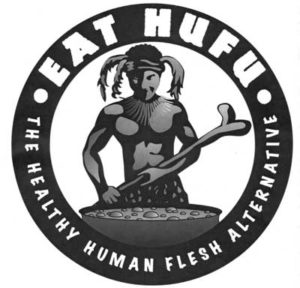- Working on my day off and watching Teenage Mutant Ninja Turtles. #
- Sushi-coma time. #
- To all the vets who have given their lives to make our way of life possible: Thank you. #
- RT @jeffrosecfp: While you're grilling out tomorrow, REMEMBER what the day is really for http://bit.ly/abE4ms #neverforget #
- Once again, taps and guns keep me from staying dry-eyed. #
- RT @bargainr: Live in an urban area & still use a Back Porch Compost Tumbler to fertilize your garden (via @diyNatural) http://bit.ly/9sQFCC #
- RT @Matt_SF: RT @thegoodhuman President Obama quietly lifted a brief ban on drilling in shallow water last week. http://bit.ly/caDELy #
- Thundercats is coming back! #
- In real life, vampires only sparkle when they are on fire. -Larry Correia #
- Wife found a kitten abandoned in a taped-shut box. Welcome Cat #5 #
Watching My Debt
- Image by Getty Images via @daylife
I’m so excited. Yesterday, I transferred the final payment for my personal line of credit. This LOC was originally my overdraft protection LOC that had worked it’s way up to $6000 at 21%. Today, it is non-existent.
We started to pay down debt on April 15th, 2009. Since that time, we have paid off $22, 370.70 of our debt. That isn’t $22,370.00 in payments, that is a $22k reduction in our total debt! By my calculations, we have made approximately $28,000 in payments to get that reduction. Next week, we cross the line for 25% of debt eliminated. This is a good day.
Over the last 14 months, we’ve settled into much more responsible spending and saving habits. It no longer feels like we’re sacrificing our lifestyle. We’ve built up a useful emergency fund and set aside money for some things that we know are coming, like braces for my son. In 6 weeks, we are taking our first debt-less vacation.
Now, we start on the long slog to the end. We have 3 debts left to pay: Our last car loan(ever!), one credit card which was an accumulation of pretending we were making progress on our debt by combining many debts onto one card, and finally, our mortgage. The car will be paid by the end of the year. When summer childcare expenses are over, we’ll be making triple payments until it is gone. After that, we have a long, slow couple of years paying off the credit card.
It hasn’t always been easy, but right now, it feels good to look at the progress we’ve made.
Update: This post has been included in the Carnival of Debt Reduction.
Disclosure
I’m not terribly commercial, but I do enjoy making money.
As such, it is safe to assume that any company, entity, corporation, person, place, thing, or other that has a product, service, post, or link has in some way compensated me for said product, service, post or link. That compensation–direct or indirect–may be in the form of money, swag, free trips, gold bullion, smurf collectibles, super-models, or just warm-fuzzies. That list is NOT in order of preferred method of compensation.
To reiterate: If it’s commercial, and it’s here, I’m probably being paid for it.
Selling Your Car
- English: Jalopy car in Joshua Tree National Park in Hidden Valley Campground (Photo credit: Wikipedia)
When it’s time to replace your car, most people focus on the new car, instead of the old, but that is ignoring real money. Your old car–unless it has disintegrated–still has value. Sometimes, it’s just time to ask yourself, “When should I sell my car?”
When you’re looking to sell your car (like with We Will Buy Your Car), you generally have several options:
- Tow & crush. If your car has been wrecked, doesn’t run, or is just old and beat up, you may be stuck with calling a junkyard and accepting $50 for them to pick up your car and crush it for scrap.
- Trade it in. This is probably the least hassle, but–other than #1–doesn’t pay well. Dealerships are willing to pay something under what they will get at a wholesale auction, which is quite a bit less than the blue book value.
- Sell it yourself. Now you’re thinking, “He’s going to buy my car! Oh, bother.” It can be a pain, but it’s also the best way to get a decent price for your wheels.
When you sell your car, there are a few things to keep in mind, much like when you sell something on Craigslist.
- Don’t be alone. There are bad people in the world, but they don’t like witnesses. Bad things are much less likely to happen if you have company.
- Know your price. Specifically, know three price: your dream price, the price that would make you happy, and the absolute lowest price you are willing to accept. Make sure you figure these numbers out ahead of time. Know what you are comfortable with before it comes time to close the deal.
- Check IDs. The buyer is going to want to test-drive your car. That’s fine, but you want to make sure you know who is driving off in your car. “Officer, Sumdood took my car. He was wearing jeans.” That won’t get your car back.
- Clean it up. Get the car detailed before you show it to a potential buyer. A sparkling-clean car will almost always bring in a few hundred extra dollars. It’s well worth the expense.
Following this plan should make the sale go as smoothly as possible and bring you the most possible money.
Readers, what have you done to dispose of an old car?
This is a sponsored post written to provide some insight into the world of used car retail.









